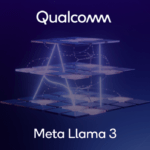As a machine learning professional, your expertise may lie in devising predictive models to observe data models.
However, when you are writing a resume there is little you can do about predicting the recruiter’s behavior.
You need to make sure that your resume has all the information that the recruiter needs, and it is job-specific.
In this guide, we will cover 5 essentials that will help you create a stellar machine learning resume:
Write a quantified professional experience section
The work experience section in a resume is the most important section that needs to be crafted prudently.
For you to showcase your abilities and list your key accomplishments as a machine learning professional, you should be able to demonstrate the exact values and figures around it.
Let’s say you worked on Data Mining and Automation, this section should have points regarding your contribution.
For example:
Data Mining & Automation
- Leveraged data mining improving sales performance by 13% and generating leads
- Saved time by 50% by automating reports generation regarding the KPI trends, site health report, etc.
See how in the above example, the statements have quantified achievements and do not exceed more than one line. Further relevant sub-headings also showcase the skills. Thus, a recruiter can adjudge 2 things at a first glance that:
- You have data mining & Automation skills
- You deployed these skills to deliver a quantifiable impact
Try to follow the same format while writing the entire professional experience.
Segregation of technical and key skills
As a machine learning professional, you need to create two sections for all your skills. One section named “key skills” should have the non-technical expertise, and the other section “technical skills” should have all the technical methodologies you are familiar with.
You can use the subheadings provided in the professional experience as key skills because the idea is to keep all the skills in one place so that the recruiter can connect the relevant expertise to the job description.
For instance, Data Mining & Automation shown above can also be used as the broad-level functions in the “Key Skills” section.
When it comes to construing technical skills, it is fairly simple. Your technical know-how of the tools that you use every day, be it Python, BeautifulSoup, or Linux should be listed under “technical skills” subheading.
Also, do not add any soft skills or personality traits in these sections as they do not create the right impression.
Include your projects
The problem with including projects in a resume is that most professionals do not know how to include them.
This misinformation ends up making the resume filled with industry-related jargon with 3-4 pages.
At any cost, your resume should not exceed over 2 pages, so you need to include your projects correctly to create a stellar resume.
Here is how you can master this:
- Correct format: The ideal format for writing projects is “aim-solution-achievement”. Though make sure you keep these subsections restricted to one line.
- Tech stack: This is highly critical as it showcases the tools you have while working on your projects. For example, Scikit-Learn, Linux, etc.
- Solution: Most professionals make a blunder by writing a huge paragraph that goes into detail about how you tackled the problem. This is highly irrelevant and does not bode well with the recruiter. Keep the solution restricted to one line and focus on what you achieved.
Resume Overview
Though a resume is only 1 or 2 pages, recruiters still do not get much time to peer through each resume. Hence, a professional summary is required that serves as an overview of the resume in a paragraph form.
It should entail all your significant achievements across all your work profiles, and keywords relevant to the job profile.
Check this example below to get an idea about how to write a professional summary:
3+ years experienced Machine Learning & Artificial Intelligence Professional with expertise mining data for determining sales patterns and achieving business goals. Proficient in utilizing EDA to analyze data and ensuring timely execution of system algorithms for product development goals.
Include relevant credentials
The profile you are targeting likely requires you to have a certification/degree for machine learning or data science.
To improve your credibility as a professional, your resume should have certifications and educational degrees that can help your case.
Further, these credentials can also help bridging a skills gap or a career break.
Let’s say you had to leave your job because you contracted a disease, and this unfortunate incident subjected you to a gap of 1 or 2 years. Or, let’s say you are an entry-level professional who is targeting a machine learning position.
No matter what the case is, certifications/training/educational degrees can help you cover these aspects of your profile.
Conclusion
Coming to the end, the essentials covered to write a machine learning resume have almost all the aspects that can help you create a stellar resume. Make sure you apply each tip correctly and avoid lying on your resume.
Related Article
Finding The Best Bitcoin Mining Hardware
Realizing the difference between ML and AI
How to Leverage Social Media Data for Your Marketing Strategy








Leave a Reply